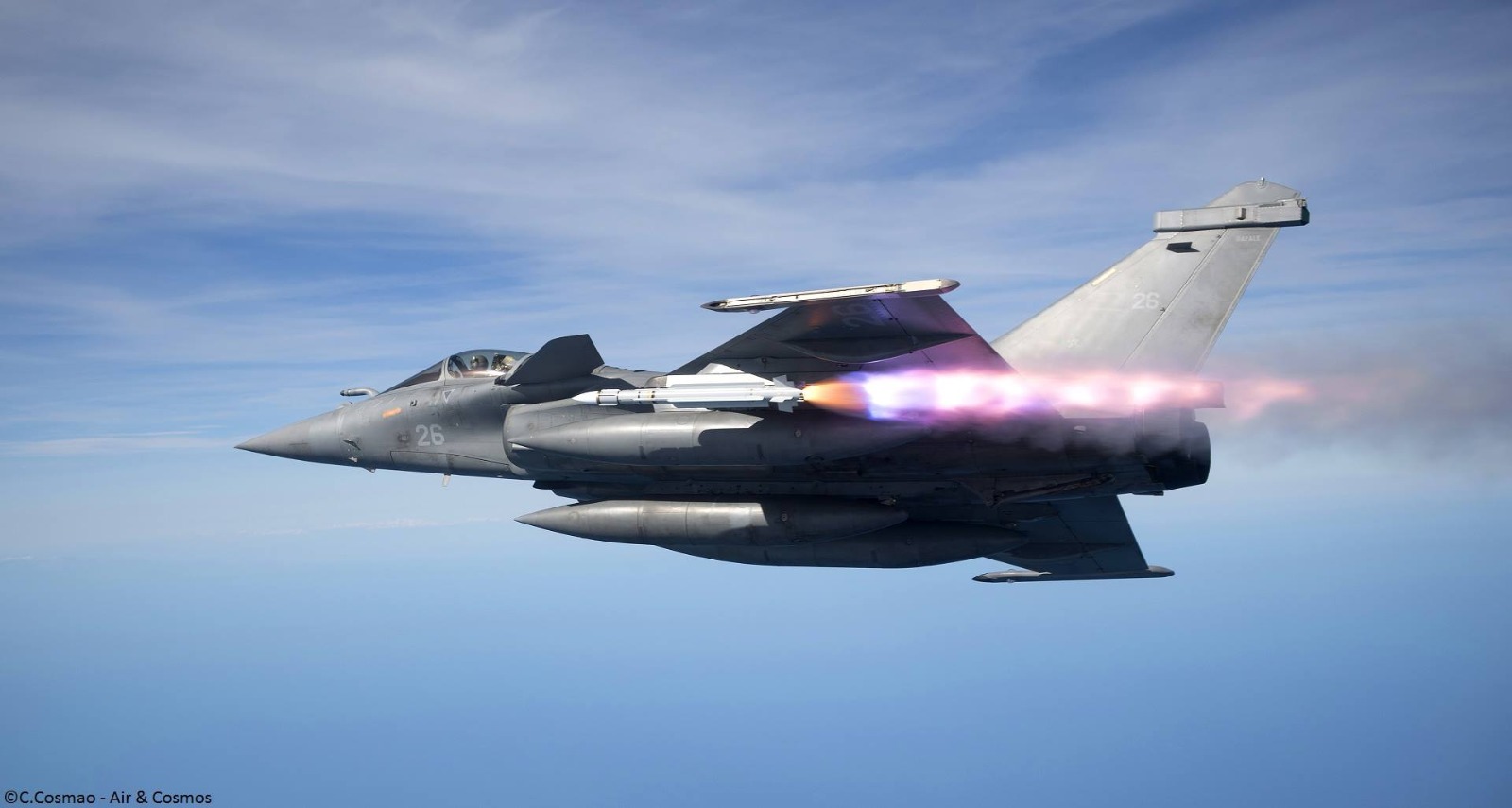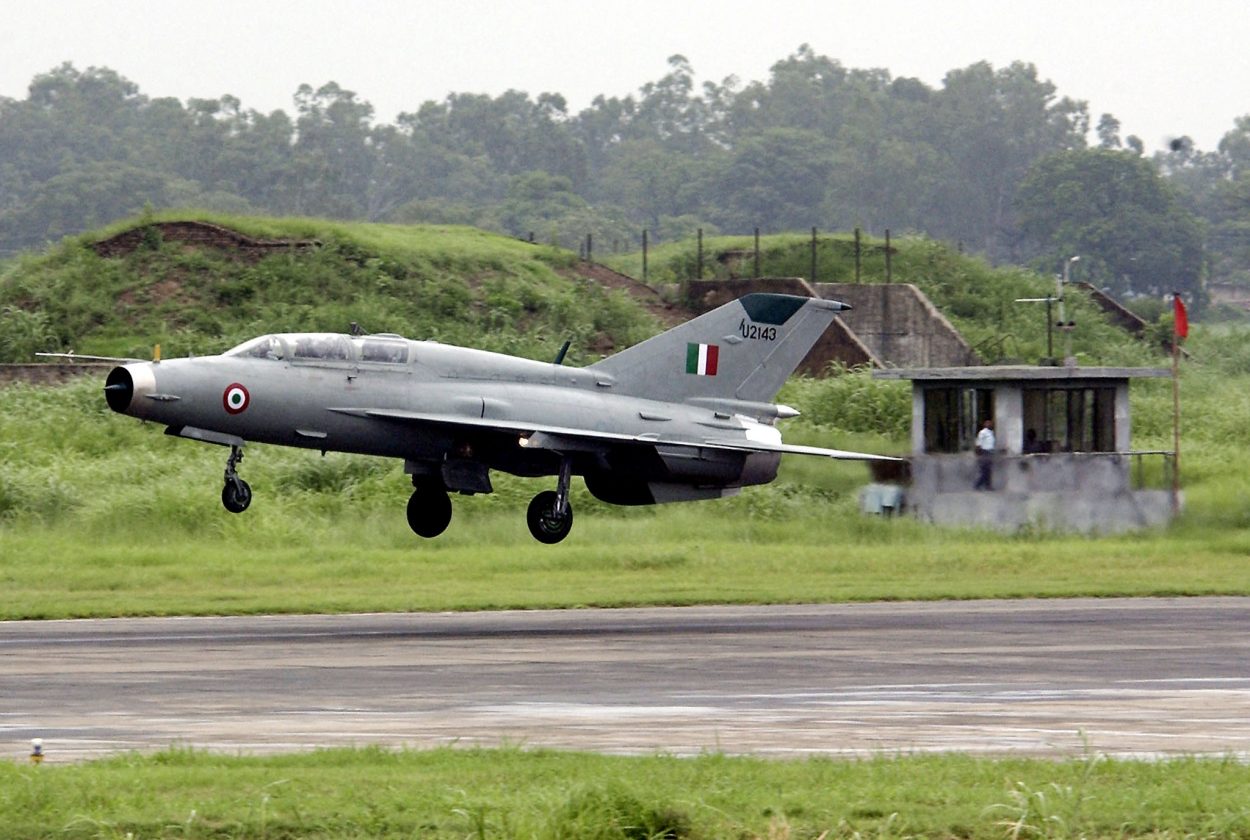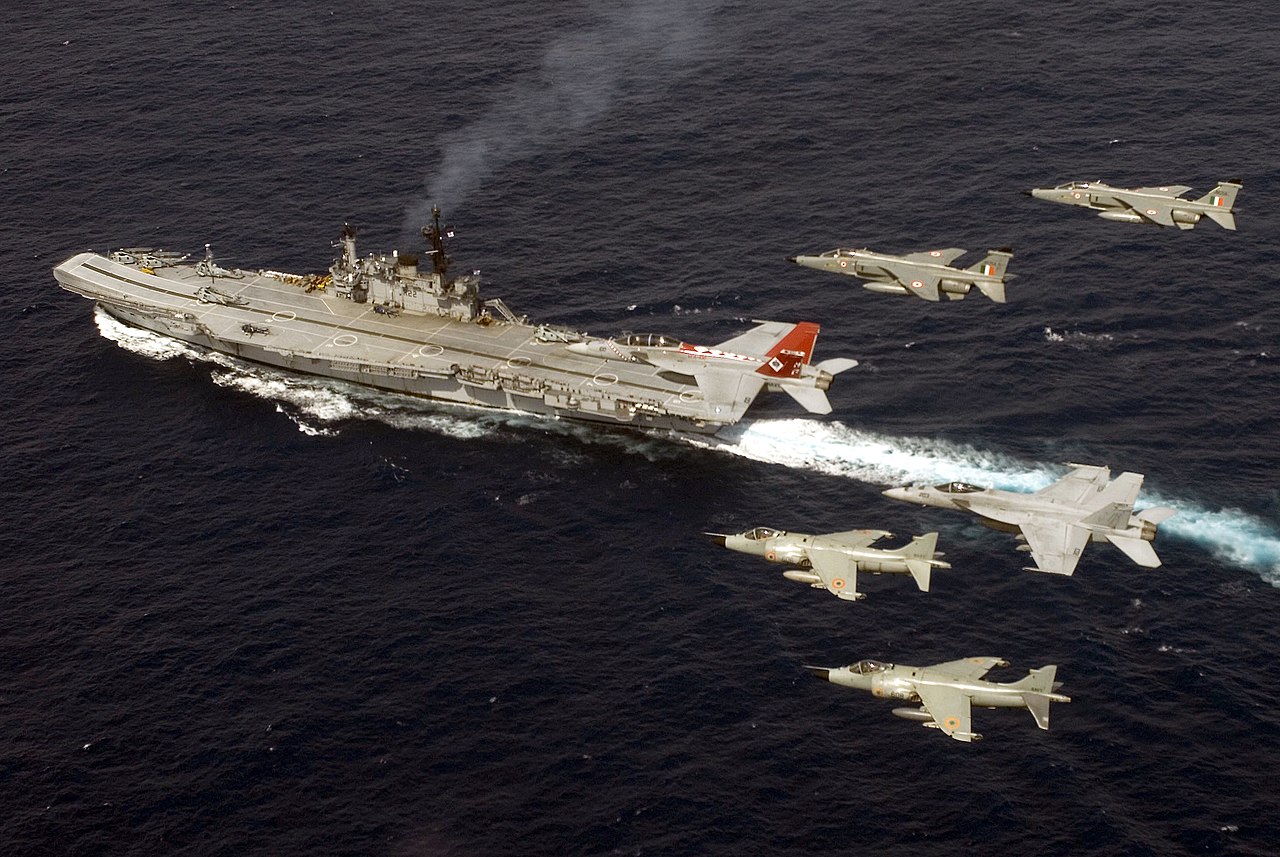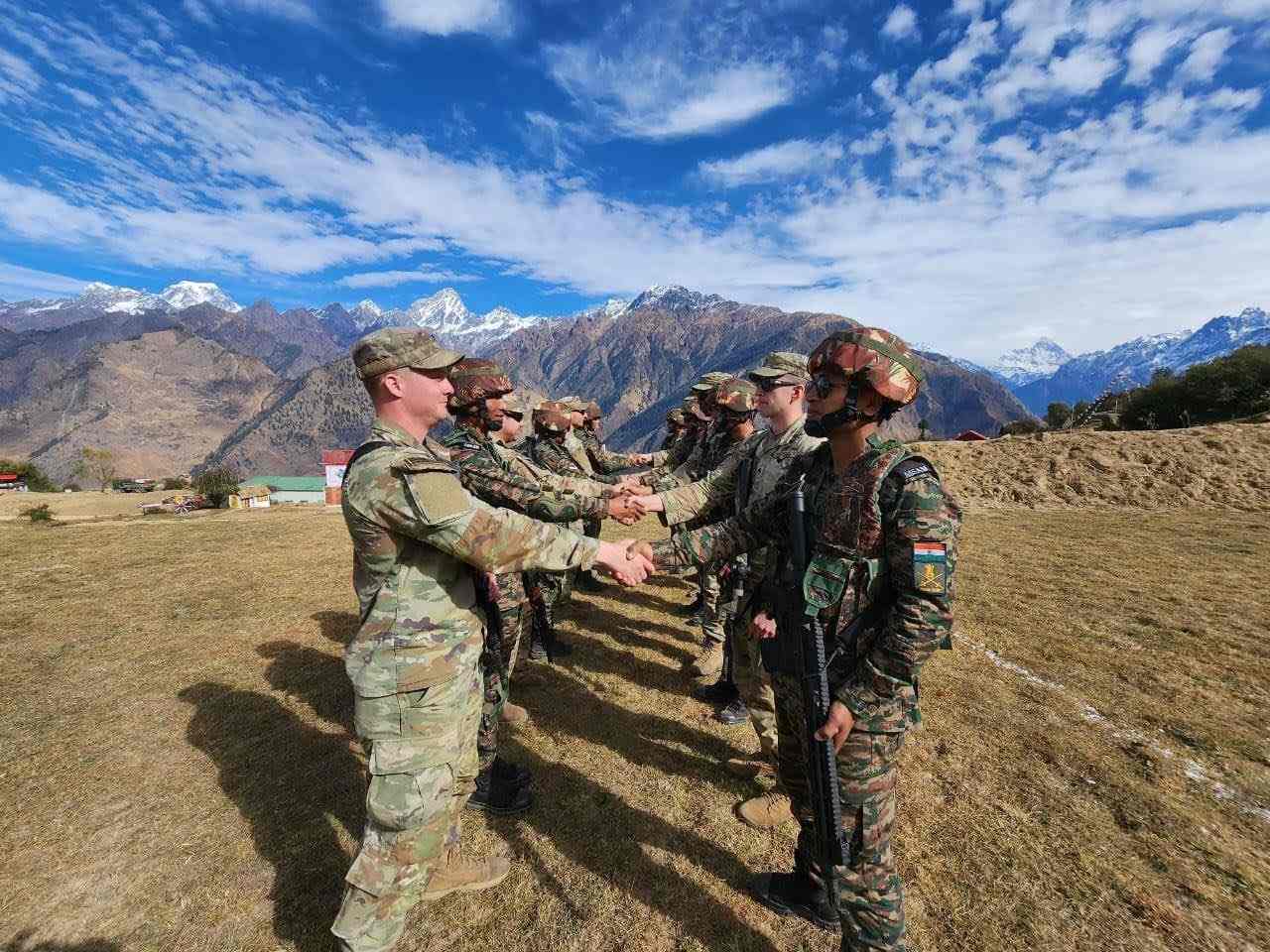IAF Rafale Jets That Pakistan Says It “Shot Down” With Tail Numbers BS-21, 22, 27 To Join Cope India 2025 Drills? Fact Check

In a first, the Quad nations will come together for their first-ever joint air drill, Cope India 2025, to be hosted by India in November. There are speculations that IAF Rafale jets could participate in the aerial exercises.
Simultaneously, the four nations – India, the US, Japan, and Australia – will also proceed with the annual Malabar Naval Exercise, another major Quad event, which will be hosted by the US at Guam, a key American military outpost in the western Pacific, about 2,500 km east of the Philippines.
Notably, while the Quad countries have been participating in the annual Malabar Maritime Exercise since 2020, this will be the first time that the four countries will also join together for an air drill.
The simultaneous air and naval drills underline the Quad countries’ commitment to the alliance, despite rising trade tensions with the US.
Furthermore, the 2025 Malabar Exercise will be organised in Guam, part of the second island chain in the Indo-Pacific. It is likely to irk Beijing, which has consistently seen the Quad alliance as an anti-China grouping.
The Second Island Chain is a series of island groups in the Western Pacific that stretches from the Japanese archipelago through the Mariana Islands (which include Guam) to the western Caroline Islands.
It serves as a notional line of defense or influence in the Indo-Pacific, a key component of the US and allied military strategy to counter China’s maritime expansion.
Cope India 2025: Rafale Rumors?
The Cope India 2025 joint air drills will be led by India and the US, with Japan and Australia participating as observer countries.
Notably, while Japan had previously joined as an observer in Cope India 2023, this year’s joint drills will mark Australia’s debut, completing the first structured engagement of all four Quad members in an air domain exercise.
The joint air drills will be held in November this year, the Tribune reported.
Meanwhile, social media is buzzing with unverified claims that three Indian Air Force (IAF) Dassault Rafale aircraft, with tail numbers BS-021, BS-022, and BS-027, are registered to participate in the bilateral Cope India 2025 exercise.
Incidentally, these are the exact Rafale tail numbers that the Pakistan Air Force and Pak-backed propagandists claimed to have shot down during the May 2025 conflict (Operation Sindoor).
In an article for Key Aero, noted aerospace journalist Alan Warnes, who spoke with multiple Pakistan Air Force (PAF) officials, provided the tail numbers of Rafale jets the PAF believes it shot down.
Warnes noted in the article that a senior PAF official told him: “The Rafale is potent enough, and while we initially declared we had shot down three, BS001 [17 Sqn], BS022, BS027 [both 101 Sqn], we also had it confirmed by HUMINT [human intelligence] in mid-July that BS021 [from 101 Sqn] had been confirmed as shot down, over Srinagar.”
Furthermore, speaking at a press conference organized by the Islamabad Policy Research Institute (IPRI), Lt Gen (R) Kidwai, a senior adviser to the country’s National Command Authority (NCA), disclosed the tail numbers of the destroyed Indian Air Force (IAF) Rafales as BS001, BS021, BS022, and BS027.
IAF has outrightly rejected these claims.

Three Rafales bearing the exact tail numbers are registered to participate in Cope India 2025 as per claims. If accurate, then this would finally put to rest Pakistan’s false narrative that it shot down multiple Indian Rafale fighter jets during the May conflict.
Incidentally, while India has not confirmed any Rafale loss, Dassault Aviation Chairman and CEO Éric Trappier stated that India had lost one of its Rafale fighter jets. However, the incident was attributed to a high-altitude technical failure rather than an enemy shootdown.
Notably, Indian Rafale fighter jets had also participated in the Cope India 2023 edition. It’s not surprising if IAF Rafales are part of Cope India 2025 as well. However, it can not be ascertained at this stage which particular Rafale jets will be part of the drill.
EurAsian Times understands that details about which Rafale aircraft, including their specific tail numbers, will participate in the exercises remain unclear, as some may be undergoing repairs, overhauls, or routine maintenance.
Yes, it would be a massive setback for Pakistani propagandists if IAF actually deploys even one of the jets during drills.
Cope India started as a series of bilateral air force exercises between the Indian Air Force (IAF) and the United States Air Force (USAF), conducted primarily on Indian soil. The drills focus on enhancing interoperability, sharing tactics, and building mutual understanding of air combat capabilities.
Notably, while Cope India has been held biennially for the last two decades (except for a brief hiatus from 2010 to 2017), military analysts still passionately discuss and debate the results of the first Cope India in 2004.
Cope India 2004: When IAF MiG-21s “Defeated” US F-15 Eagles
The first bilateral dissimilar air combat exercise between the US Air Force (USAF) and the Indian Air Force (IAF) took place in the 2004 edition of ‘COPE India’ Field Training Exercise (FTE) at one of the oldest IAF bases, about 241 km south of Delhi in Gwalior.
Dissimilar air combat training, or DACT, is simulated combat flying between two Air Forces flying different aircraft types.
Approximately 150 airmen from Elmendorf Air Force Base (AFB), Alaska, took part in the exercise with their F-15 Eagles. On the other hand, the IAF aircraft participating in the exercise included the Mirage 2000s, MiG-21s, MiG-27s, and SU-30s.

However, what created a buzz in strategic circles in India and the US was the defeat of American F-15s by MiG-21 Bisons fielded by the Indian side.
The IAF MiGs reportedly achieved a ‘kill ratio’ of 9:1 against the USAF F-15 Eagles.
India’s leading paper, The Times of India, ran headlines – ‘Aging IAF Shoots Down USAF Top Guns’.
The military.com reporting about the exercise at the time said: “The whole world knows that if you mess with U.S. Air Force pilots, you’re going down. Hard. Except someone forgot to send the memo to India. Because, in recent exercises, Indian flyboys in low-tech Russian and French jets defeated American F-15C pilots more than 90 percent of the time.”
Speaking, Air Commodore Harish Nayani (Retired) said: “The Cope India 2004 was extremely educational and encouraging for us. We were surprised by the results. It was a lesson that an old machine can be fighting fit after upgrades.”
The two air forces conducted the actual exercise in an Offensive Counter Air (OCA) versus Defensive Counter Air (DCA) setting. “We had the advantage of having AWACS IL-76 with us. We would alternate between OCA and DCA. What was surprising was that Bison, because of its small size, advanced EWS, and radar, could, in certain scenarios, get better than the F-15,” Nayani said.
During Cope India 2023, the USAF has deployed two B-1 bombers, four to six F-15Es, one C-17, and two C-130s. The IAF deployed Rafales, Tejas, Jaguars, and Su-30 MKIs. The exercise was supported by IAF aerial refuellers, Airborne Warning and Control System (AWACS), and Airborne Early Warning and Control aircraft (AEW&C).
It will be interesting to see which aircraft the IAF and the USAF deploy for this year’s Cope India.
Malabar 2025
Originally launched in 1992 as a bilateral naval exercise between India and the US, Exercise Malabar has since evolved into a key multilateral engagement under the Quad framework.
Japan and Australia joined the naval drills in 2007, but Canberra withdrew from later editions due to concerns over annoying Beijing. Australia rejoined the annual naval drills in 2020.
Malabar 2024 was held in India. The exercise featured various Indian naval platforms, including guided-missile destroyers, multi-purpose frigates, submarines, fixed-wing MR aircraft, fighter aircraft, and helicopters.
Australia deployed HMAS Stuart, an Anzac-class frigate with its MH-60R helicopter and P-8 maritime Patrol Aircraft, and the United States Navy fielded the USS Dewey, an Arleigh Burke-class destroyer with its integral helicopter and P-8 maritime Patrol Aircraft.

Japan joined the exercise with JS Ariake, a Murasame-class Destroyer. Special Forces from all four nations also participated in the Exercise.
This year, the Indian Navy warship INS Sahyadri will join the maritime exercise Malabar at Guam. Sahyadri is a Shivalik-class guided-missile stealth frigate designed and commissioned by India in 2012.
The four-nation drill is often dubbed by Beijing as ‘anti-China,’ largely because its participants — India, the US, Japan, and Australia — are also members of the Quad, often dubbed an Asian NATO.
Indo-US Joint Drills In 2025
Notwithstanding the trade tensions and the tariff war between India and the US, the two countries have continued to participate in joint drills, train side by side, and enhance interoperability of their war strategies and weapons systems.
In fact, the US is already India’s ‘biggest military trainer partner’.
According to the US Congressional Research Service, “India now conducts more exercises and personnel exchanges with the United States than with any other country.”
In 2025, India and the US already participated in multiple (Bilateral as well as multilateral) war drills, such as the Tiger Triumph 2025, Bright Star 2025, Yudh Abhyas 2025, Vajra Prahar, Exercise Sea Dragon, La Perouse, and Talisman Sabre. The participation of India and the US in Cope India and Malabar 2025 will continue this trend.

These multiple war drills are a key indicator of India and the US’s shared vision for an Indo-Pacific region that is “free and open, connected, prosperous, secure, and resilient.”
However, the first-ever air drill of the Quad nations and the Malabar 2025 in Guam are sure to invite an angry response from Beijing, which has often termed these war drills as a “security concern” for China.
Chinese media have also criticised India and South Korea’s first-ever joint naval drills earlier this month.
It will be interesting to see how Beijing responds to these drills this time in its own backyard.
- Questions and Answers
- Opinion
- Motivational and Inspiring Story
- Technology
- Live and Let live
- Focus
- Geopolitics
- Military-Arms/Equipment
- Security
- Economy
- Beasts of Nations
- Machine Tools-The “Mother Industry”
- Art
- Causes
- Crafts
- Dance
- Drinks
- Film/Movie
- Fitness
- Food
- Games
- Gardening
- Health
- Home
- Literature
- Music
- Networking
- Other
- Party
- Religion
- Shopping
- Sports
- Theater
- Health and Wellness
- News
- Culture

